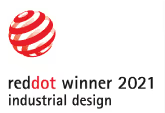Ideation that can transcend our traditional industry niches
As an industrial designer and innovation management consultant, ideation is a familiar topic, the principles of which can be applied across many industries. At Trig, we have built deep industry experience in consumer products, but we have also found that most of our talents translate easily into medical devices and most recently, even to service companies. As Trig has expanded its talent base, we have actively sought to build service areas like ideation that can transcend our traditional industry niches of tools, hardware, furniture, and other products for home improvement.
One of the benefits of being a multi-industry innovation consultancy is that we bring fresh thinking to every engagement. Many clients and prospects think of ideation on a pretty esoteric level—it’s often hard to get your arms around it, unless you’ve actually participated in an ideation session. I enjoy relating the results of ideation to different products people see in the marketplace across various industries, as well as communicating the method that drives ideation by behaviors that people find readily accessible in their minds.
In the first installment of this two-part series, we’ll take a look at how ideation yields powerful results that transcend particular industries. You’ll no doubt find the ideas behind directional oil wells and endoscopic devices, as well as how they are deployed in similar situations—albeit within entirely different landscapes.
Directional Oil Wells versus Endoscopic Devices
A great example of cross-industry results driven by ideation showcases the similarities between techniques developed by the oil industry for Directional Oil Wells and the medical device industry for Endoscopic Devices.
Exploration companies use directional oil wells to reach oil or gas targets in difficult-to-reach places, such as areas beneath cities and swamps. Directional oil wells are composed of two key elements, the mud motor and electronic measurement devices. The mud motor provides additional power to the bit while drilling and can bend and steer the well in different directions, providing greater scope of reach.
While drilling, coteries of high-tech electronic devices located above the mud motor are used to calculate down-hole measurements and transmit data to the rig floor. These devices tell operators how and where to steer the directional oil well.
Since oil and gas reservoirs tend to accumulate horizontally, allowing more oil extraction per installed oil well.
As with directional oil wells, endoscopic devices are charged with reaching difficult locations, finding hollow places within organs or and other cavities within the body. A friend of mine has described his frequent trips to his local otolaryngologist, who utilizes an endoscopic device to aid in the treatment of his chronic airway problems
Inserted through the nose, the flexible tube of the device, equipped with an LED light and camera at its tip, can reach nearly to the top of my friend’s lungs. The doctor moves the unit slowly down its course, first through the nose, then down through the airway, as he watches the camera in live action on an HD monitor. He clicks pictures along the way, with the device recording where in the body’s “coordinates” that the doctor sees inflammation in need of treatment.
This multi-element device, designed with some of the same features as the directional oil well, allows for much greater precision in the treatment of my friend’s chronic airway problems. And, much like the directional oil well, the endoscopic device eliminates the guessing game, pinpointing, in this case, the problem to be addressed.


